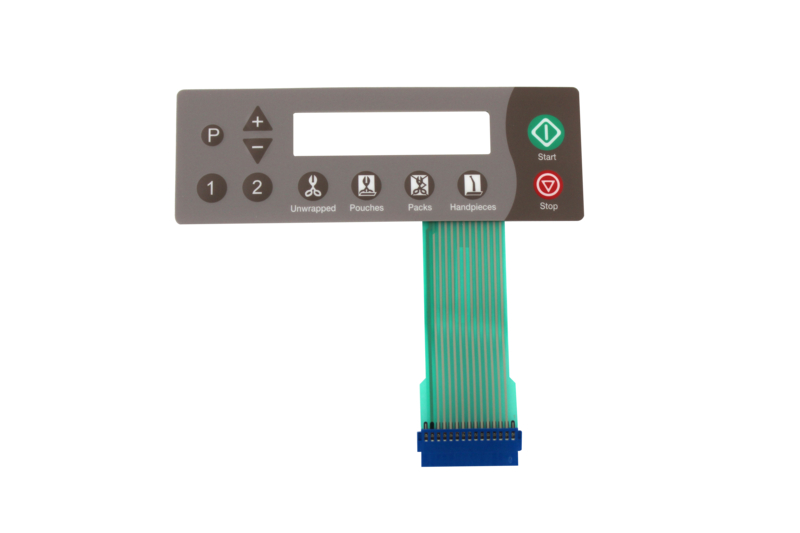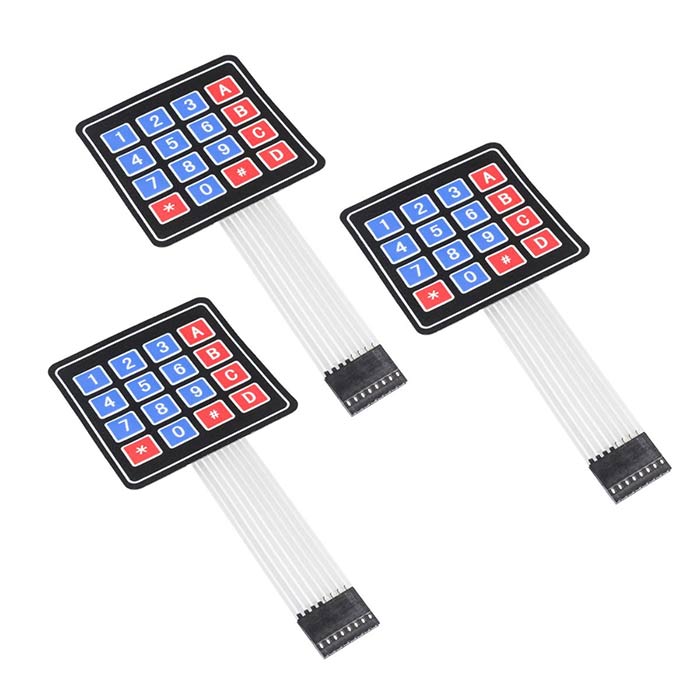Collaborating with an experienced membrane switch manufacturer enhances your manufacturing process.
Collaborating with an experienced membrane switch manufacturer enhances your manufacturing process.
Blog Article
Everything About Membrane Switch: Recognizing Its Style and Performance
When you think about the control interfaces in contemporary gadgets, membrane layer switches often come to mind. Let's discover what sets membrane changes apart from various other control systems.
What Are Membrane Layer Switches?

Membrane switches can additionally be personalized regarding form, dimension, and graphics, allowing manufacturers to develop unique user interfaces tailored to specific items. In general, membrane buttons play a considerable role in boosting individual experience across a large variety of applications.
Just How Membrane Switches Job
When you press a key on a membrane button, it activates a straightforward yet reliable device. membrane switch manufacturer. The leading layer, typically made of flexible material, pushes down onto a conductive layer below it.
You'll discover that the responsive feedback varies based upon the button design, providing either a soft click or a much more obvious action. As soon as you release the trick, the membrane layer returns to its original position, resuming the circuit and quiting the signal. This process occurs nearly instantaneously, guaranteeing a receptive customer experience.
Membrane layer switches are popular because of their resilience and resistance to dust and dampness, making them ideal for various applications, from family appliances to clinical tools. Recognizing this procedure assists you value their widespread use.
Key Components of Membrane Layer Buttons
Understanding the essential parts of membrane layer switches is essential for comprehending their capability and layout. At the core, you'll find the visuals overlay, which offers the aesthetic interface for users. Under that, there's a spacer layer that separates the circuit layers, ensuring that they don't make contact until pressed. The circuit layer is where the magic takes place; it includes conductive traces that complete the circuit when you press the button. Another necessary aspect is the sticky backing, permitting the button to abide by surfaces securely. Ultimately, the safety layer shields against environmental elements and use, prolonging the switch's lifespan. Each element plays a significant function in ensuring dependable efficiency and individual interaction. By recognizing these components, you'll acquire insight right into exactly how membrane changes operate and their importance in numerous applications.
Materials Made Use Of in Membrane Layer Switch Style
The performance and durability of membrane layer switches greatly depend on the products used in their layout. You commonly experience polyester and polycarbonate as key substrates because of their outstanding toughness and adaptability. These materials withstand scrapes and chemicals, making them suitable for requiring environments.
The conductive layers usually utilize silver or carbon, selected for their integrity and conductivity. membrane switch manufacturer. Silver offers remarkable efficiency, while carbon is a cost-effective alternative. For the overlay, you might take into consideration a matte or shiny finish, depending upon your aesthetic requirements and individual experience
Make certain to pick adhesives that withstand environmental aspects like temperature level and moisture. Picking the ideal materials will assure your membrane layer switch stands the test of time.
Layout Factors To Consider for Membrane Layer Buttons
While designing membrane switches, it's essential to take right into account various factors that affect their performance and individual experience. Beginning by concentrating on the design and button size; make specific they're intuitive and easy to browse.
Confirm your style fits ecological aspects, like moisture or temperature level variations, which can affect efficiency. By carefully taking into consideration these elements, you'll create a membrane layer switch that enhances usability and satisfaction.
Applications of Membrane Layer Buttons
Membrane switches are versatile components found in various applications, from commercial tools to consumer electronic devices. You'll see their influence in equipments that require resilient interfaces and in devices that take advantage of sleek layouts. Comprehending these applications aids you appreciate the functionality and functionality of membrane buttons in daily innovation.
Industrial Tools Usage
When you're wanting to boost the capability of industrial equipment, membrane layer buttons provide a reputable option that integrates resilience with straightforward layout. These buttons are excellent for severe environments, providing resistance to dirt, moisture, and chemicals. You'll find them in control panels for manufacturing machines, cooling and heating systems, and medical gadgets, where accuracy and responsiveness are essential. Their reduced profile implies they fit perfectly right into different devices, conserving valuable room while maintaining ease of usage. With adjustable graphics and backlighting options, you can create an intuitive interface for drivers, improving efficiency and safety and security. Plus, their long life expectancy lowers maintenance prices, making them a wise financial investment for your industrial applications. Accept membrane switches to streamline your operations and improve total performance.
Customer Electronic Devices Assimilation
In the domain of customer electronic devices, membrane layer switches play a vital duty in improving customer communication and gadget functionality. Membrane buttons also click this site ensure sturdiness and resistance to dirt and wetness, expanding the life-span of your electronic devices. By picking membrane layer buttons, you enhance not simply the performance however likewise the style of your devices, making everyday interactions smooth and enjoyable.
Advantages and Disadvantages of Membrane Layer Buttons
While membrane switches supply a variety of benefits, they additionally come with some drawbacks that you should think about. One significant advantage is their small style, making them excellent for space-constrained applications. They're additionally cost-effective, supplying a long lasting remedy with a low production price. On top of that, their smooth surface area is easy to tidy, enhancing health in settings like healthcare facilities.

However, there are drawbacks. Membrane layer switches can have a shorter life-span contrasted to mechanical switches, especially under hefty usage. They can also be less tactile, which might affect individual comments throughout operation. If harmed, repairing them can be tough and commonly calls for complete substitute. Ultimately, their sensitivity to severe temperature levels and ecological problems might limit their efficiency in particular settings. Stabilizing these pros and cons will certainly aid you figure out if membrane buttons are the best fit for your task.
Often Asked Questions
How Much Time Do Membrane Layer Switches Over Usually Last?
Membrane switches over usually last in between 5 to one decade, relying on usage and environmental conditions. You'll intend to evaluate elements like wear, direct exposure to wetness, and temperature fluctuations to determine their durability efficiently.
Can Membrane Switches Over Be Customized for Certain Designs?
Yes, you can tailor membrane layer switches to fit specific layouts (membrane switch manufacturer). You'll have the flexibility to select shades, shapes, look at these guys and formats that match your job's needs, guaranteeing they blend flawlessly with your general aesthetic
What Is the Expense Variety for Membrane Layer Switch Manufacturing?
The price variety for membrane button production normally falls in between $1 and $10 per system, depending on variables like design intricacy, quantity, and products. You can obtain quotes from makers to locate the very best option.

Are Membrane Layer Switches Water-proof or Immune?
Membrane layer buttons can be made to be waterproof or immune, relying on check out here materials utilized and building techniques. If you require them for damp settings, assure you define those demands during the style process.
Exactly How Do Membrane Switches Over Compare to Typical Buttons?
Membrane layer switches are normally thinner and much more versatile than conventional buttons, supplying a sleek layout. They're frequently less complicated to clean and integrate, yet might not offer the tactile feedback you're made use of to with mechanical choices.
Verdict

Report this page